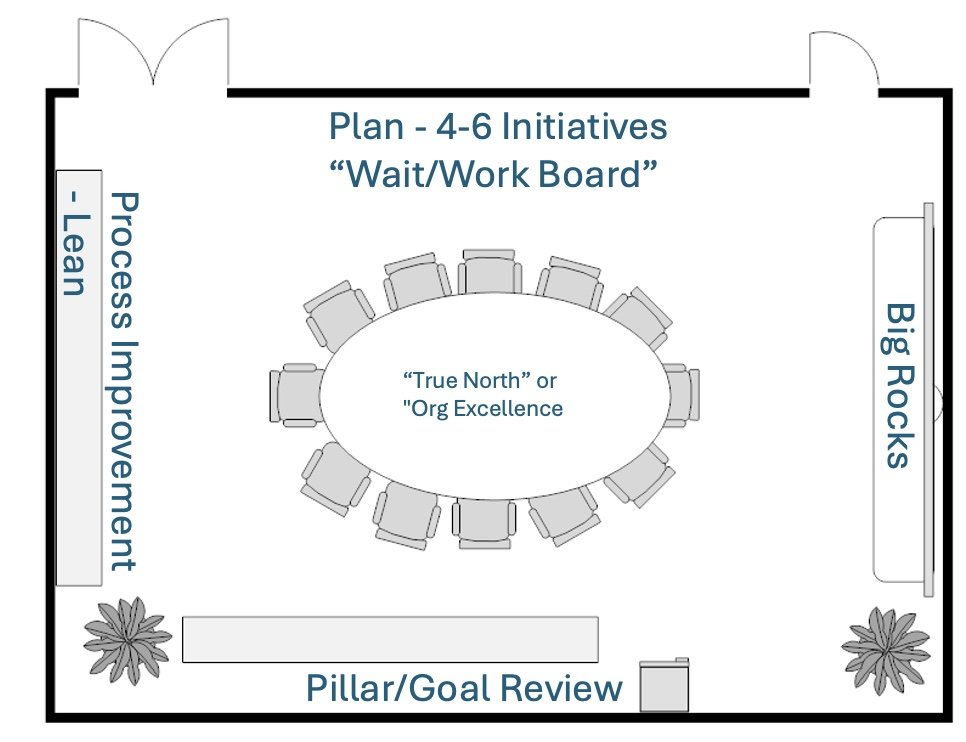Just Culture - Beyond Patient Safety to Organizational Excellence
Just culture is often discussed in the context of patient safety and medical error management, but its true impact extends across every facet of organizational life. When done well, just culture helps healthcare organizations balance accountability with improvement—fostering transparency, trust, and ethical integrity. Yet, these principles are only as strong as leadership’s commitment to applying them consistently, especially when confronting serious ethical concerns.
The Power of Nursing Excellence: How Strong Nursing Practice Transforms Healthcare Organizations
Early in my career as a hospital CEO, I learned a fundamental truth about healthcare leadership: the strength of an organization's nursing practice can make or break its success. This insight didn't come from spreadsheets or board meetings—it emerged from walking the hospital floors, observing the intricate dance of healthcare delivery, and witnessing the profound impact of nursing excellence on every aspect of our operations.
In the hospitals I've led, I've seen how strong nursing practice creates a ripple effect that touches every corner of the organization. It starts at the bedside, where skilled nurses deliver evidence-based care with precision and compassion. But its influence extends far beyond direct patient care, shaping everything from financial performance to organizational culture.
Understanding Just Culture - Building a Foundation for Patient Safety
Where lives hang in the balance and split-second decisions can make all the difference, creating a safe environment isn't just about rules and regulations—it's about culture. Specifically, it's about fostering what healthcare experts call a "Just Culture," a framework revolutionizing how healthcare organizations approach patient safety and staff accountability.
At its heart, Just Culture represents a fundamental shift in our thinking about mistakes and accountability in healthcare settings. Rather than defaulting to blame when things go wrong, this approach encourages organizations to take a deeper look at both individual and systemic factors that contribute to errors. It's about finding the delicate balance between personal responsibility and organizational support—understanding that while healthcare professionals must be accountable for their choices, they also deserve support when systems fail them.
Center of Excellence Certification as a Differentiator
Standing out and creating a competitive advantage in the marketplace while delivering exceptional patient care has become more challenging than ever. Healthcare organizations continually search for ways to differentiate themselves meaningfully in their markets. One powerful approach that is gaining traction is pursuing Center of Excellence certification through leading accrediting bodies such as DNV GL Healthcare and The Joint Commission (TJC). While each accrediting organization has its unique approach, the strategic value of these certifications extends far beyond the credential itself.
When viewed through the lens of Michael Porter's competitive strategy framework, an orthopedic center of excellence certification emerges as a powerful tool for creating sustainable competitive advantage. Whether through DNV GL Healthcare's innovative ISO 9001-based approach, The Joint Commission's disease-specific care certification, or other recognized programs, the certification process doesn't just validate clinical excellence – it serves as a catalyst for comprehensive organizational transformation that can reshape market positioning and operational effectiveness.
Managing People, Process, and Plan - A Systematic Approach to Organizational Success
In many healthcare organizations, the key to achieving success lies in effectively managing People, Process, and Plan. To truly harness this triad, it requires a disciplined, structured approach that keeps the entire team aligned with the organization’s mission, strategic goals, and improvement initiatives. One highly effective method for maintaining this alignment and keeping progress on track is what I call the "Around-the-Room Review."
This blog will explore how to set up a structured review process by utilizing the physical layout of a room to track progress and address key strategic priorities in a systematic way.






